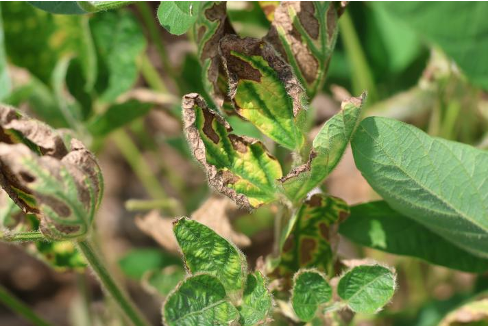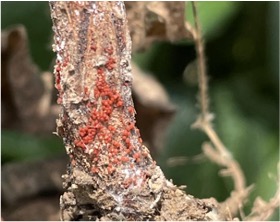Red crown rot of soybean found in Minnesota for the first time
Red crown rot of soybean found in Minnesota for the first time

Credit: Dr. Dean Malvick, University of Minnesota
Red crown rot (RCR) has been confirmed for the first time in southwestern Minnesota, according to Dr. Dean Malvick, plant pathologist at the University of Minnesota. This marks a significant discovery for Minnesota soybean growers, showing that this southern disease can now be found in our region as well. You can find the full report at this link.
RCR is caused by the soilborne fungus Calonectria ilicicola, which infects soybean roots and lower stems. In southern U.S. states, severe outbreaks have caused yield losses of 40 to 80 percent. Early detection and awareness are key to keeping it from spreading. For more details, see Dr. Malvick’s full report on the University of Minnesota Extension website.
2025 weather and field conditions
Rainfall across Minnesota from April through August 2025 was one to nine inches above average in many areas. These wetter-than-usual conditions favored several soilborne pathogens, including white mold, sudden death syndrome (SDS), brown stem rot and red crown rot. The disease tends to appear first in low-lying areas or fields with drainage problems and can expand from there as the soil stays saturated.
Recognizing the symptoms
Red crown rot can be tricky to identify early in the season, but its symptoms tend to be more prevalent in July and early August. On leaves, it often looks like SDS, showing yellowing and browning between the veins (Figure 1). Near the soil line, infected stems may show reddish or dark discoloration, and small red fungal structures (perithecia) may form (Figure 2). As infection progresses, plants may rot at the base and pull easily from the soil. For accurate identification, dig up entire plants instead of pulling them, and send them for diagnostic testing.

Red Crown Rot Foliar symptoms resembling SDS. Photo courtesy of Mandy Bish, MU Extension plant pathologist.
There are no curative treatments, but several management steps can help slow down and contain RCR.
- Scout fields carefully during July and early August, focusing on wet or low spots. If you suspect symptoms, contact your agronomist, Extension specialist, or the Minnesota Soybean Research & Promotion Council.
- Clean farm equipment thoroughly, especially if moving between farms or across state lines.
- Use longer crop rotations, which are proven to help reduce soilborne diseases.
- Keep weeds under control, since some species can host the fungus.
- Maintain balanced fertility to support healthy, resilient soybean plants.
- Select soybean varieties with strong resistance packages to SCN, SDS, brown stem rot and Phytophthora. Healthy root systems provide added protection when multiple pathogens are present.
- Seed treatments for RCR are being evaluated, and new information will be shared as it becomes available.

Red Crow Rot symptoms, Red perithecia at the stem base. Photo courtesy of Mandy Bish, MU Extension plant pathologist.
Next steps
Extension specialists, farmers and industry partners are now working together to understand how red crown rot behaves under Minnesota conditions. The focus is on monitoring, containment and the development of management practices that protect yield and soil health. Continued scouting and awareness will be the best tools to manage this new challenge in the 2026 growing season.



